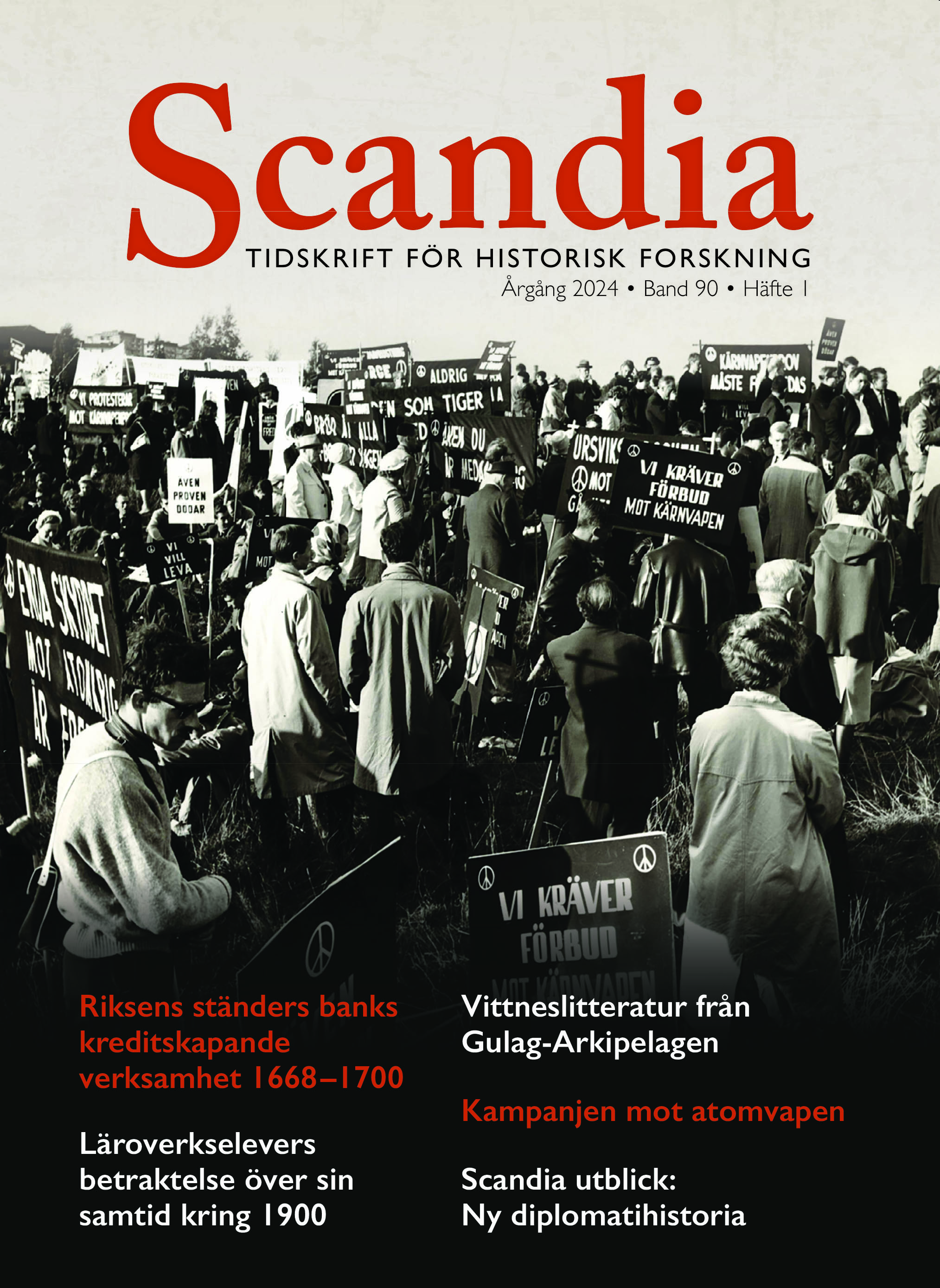På spaning efter ett modernt samhälle. Läroverkselevers betraktelse över sin samtid
DOI:
https://doi.org/10.47868/scandia.v90i1.26311Nyckelord:
historia, modernitet, tradition, genus (pojkar och flickor), studentprovAbstract
Artikeln riktar sig mot det unga 1900-talet då Sverige genomgick en betydande samhällsförvandling med stora politiska klyftor. Materialet utgörs av studentsvar inom ämnet modersmål från två läroverk i Malmö; Tekla Åbergs högre läroverk för flickor och Malmö Högre allmänna läroverket, under perioden mellan 1905 och 1927. Intresset riktas främst mot de frågor eller teman som formuleras i förhållande till hur eleverna betraktar sitt samtida samhälle och hur pojkar och flickor använder sig av historia i sina svar. De flesta studentsvaren präglas av objektiva svar, som fokuserar på neutrala fakta. I andra svar uttrycker eleverna oro över bristen på stabilitet och enighet i det svenska samhället, samt över de snabba teknologiska framstegen. När hot presenteras tenderar eleverna att använda historiska exempel för att illustrera problemen till exempel genom att måla upp en berättelse om förfall och en längtan efter en bättre förfluten tid. Det finns studentsvar där främst flickor uttrycker besvikelse över bristen på könsjämställdhet i det samtida samhället och de uttrycker en nästan otålig längtan efter ett mer modernt samhälle.






